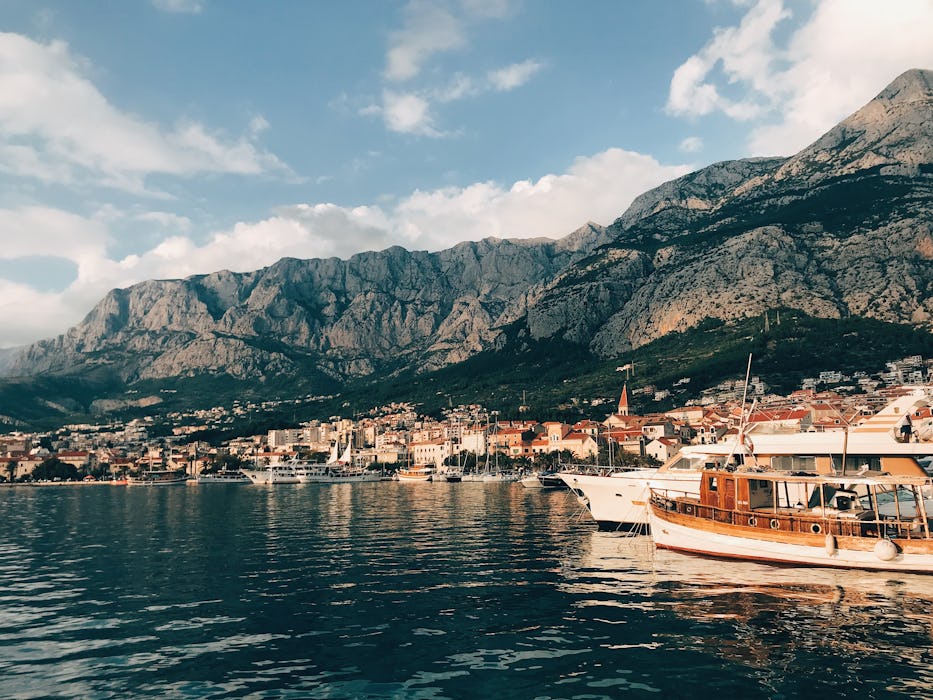Let us help you plan the perfect sailing trip
Provide your travel details, receive free offer and enjoy your holiday!
The unique charm of the Croatian coast, which combines stunning natural beauty and vibrant historical towns, leaves a lasting impression on all who visit this popular summer destination. Millions of tourists spend their holidays swimming in the warm Adriatic, lounging on some of the most beautiful beaches in Europe and sailing the nearly 1,000 Croatian islands.
Sailing the Croatian coast and islands, you will be met with a choice when finding a port. Either mooring at one of the modern marinas that offer extensive amenities, or seeking authentic harbours and charming ports for that unique experience and atmosphere.
Here you can discover some of those authentic ports located all over the Adriatic, from the shores of the Istrian peninsula all the way south past the magnificent city of Dubrovnik.
1. Rovinj
Rovinj is one of the most beautiful towns in Croatia, located on the western side of the Istrian peninsula and the second-most visited tourist destination in Croatia with 3 million recorded overnight stays during the summer season.
Perched on a spectacular peninsula, the old town of Rovinj is irresistibly reminiscent of some Italian cities, even down to the language spoken on the streets as both Croatian and Italian are the official languages here.
The Italian influence stems from the fact that Rovinj was part of the Kingdom of Italy until it was ceded to Yugoslavia in 1947. Previous to that, Rovinj was under the rule of the Republic of Venice and was one of their most important footholds in Istria for more than five centuries.
Despite offering plenty of mooring space at the newly-opened ACI Marina Rovinj, the more charming option is the Rovinj marina, found in the town port. The marina offers a great atmosphere, with beautiful views of the historic city centre and is situated near lovely restaurants and bars. Here you can enjoy a walk on the beautiful promenade offering gorgeous vistas of the town and the nearby island of Sveta Katarina (St. Catherine).
Sailing the Rovinj archipelago, you will find 22 magical islets for you to explore, with the Forest Park Zlatni Rt (Golden Cape), located in the southern part of the city, the ideal destination for some summer activities.
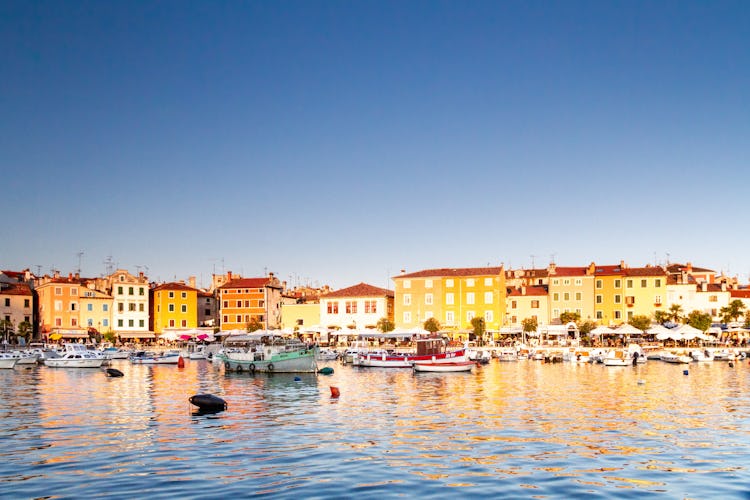
2. Veli Lošinj
Situated in a narrow bay on the southeast side of Lošinj island, Veli Lošinj houses one of the most charming and picturesque harbours in the Adriatic. This crescent-shaped harbour is the centre spot for the whole village, bustling with fishing boats and everyday life. The port is surrounded by restaurants and cafes, making it an ideal place to unwind and enjoy the ambience.
The main characteristics of Veli Lošinj are tall and colourful houses occupying the first row overlooking the harbour, and numerous luxurious tucked-away villas with beautiful gardens.
On the northern bank of the long bay, you will find the equally colourful Baroque church of Saint Anthony, built in 1774. On the opposite side of the harbour, a few steps lead to the Tower (Kula), a defensive structure dating back to 1455 and now housing an art gallery.
A short walk down the cobbled, heavily shaded streets will transport you back in time, and you will soon forget all about the stress of everyday life.
In the narrow streets of Veli Lošinj, turn-of-the-century villas, owned by former captains and wealthy ship owners hide a botanical sanctuary with as many as 80 different types of plants growing in the villa gardens.
3. Sali
Nestled in the lush surroundings of Dugi Otok, Sali is a place of a thousand-year-old fishing and agricultural tradition. Written documents dating back to the 10th century testify to the trade importance of this charming settlement, and ancient olive groves surrounding the village are a testament to the intensive agricultural activities throughout the centuries.
The cultural heritage of Sali is most evident in the religious buildings such as the parish church of the Assumption of the Blessed Virgin Mary housing a gorgeous wooden altar from the 17th century.
Similar to Veli Lošinj, the harbour is surrounded by colourful houses with restaurants and cafes housing shaded terraces where you can best enjoy the views of this charming settlement.
Located in a well-protected bay, Sali marina offers around 90 berths spread across the northern and southern quay.
Sali is mostly visited by those heading to the nearby Nature Park Telašćica and the Kornati National Park, transforming it into a busy place during the summer months.
However, the true charm of Sali is revealed to those who decide to spend a few days here and thoroughly explore the beauty of Dugi Otok. During the summer, each of the 12 settlements of Dugi Otok host festivals accompanied by the traditional music and local dishes.
4. Prvić
Prvić is a small island located in the Šibenik archipelago, covered with lush Mediterranean vegetation, vineyards and olive groves. The name Prvić (“the first one”), which dates back to the 11th century, derives from the fact that the island is closest to land, located just 1 NM south of Vodice.
There are only two settlements on the island, Prvić Šepurine and Prvić Luka, both equally charming and only one kilometre apart from each other. Both settlements are protected by the Ministry of Culture of the Republic of Croatia due to their cultural heritage.
Similar to other islands in the Šibenik archipelago, history has left a deep trace in the form of cultural and historical monuments. Various Baroque altars and chapels, the Church of St. Mary and numerous other monuments are testimony to the rich history of this tiny island.
Despite the proximity to popular tourist destinations like Vodice and Šibenik, life on Prvić goes by slowly, devoid of the crowds and stress of mass tourism.
The only hotel on the island is located in Prvić Luka - the beautifully restored three-star Hotel Maestral, housed in a former schoolhouse.
Visiting the island, you will be met by stunning beaches, clean sea and ancient stone houses making it an ideal destination for all those seeking a vacation in an authentic Mediterranean surrounding.
5. Skradin
Located 15 kilometres inland from Šibenik, Skradin is a typical Mediterranean town filled with narrow cobbled streets, passages, and stone houses, beautifully positioned at the entrance to the Krka National Park.
According to several nearby important archaeological sites, most notably Bribirska glavica (also known as Croatian Troy), the town’s history dates back more than two thousand years. The ancient Roman colony of Scardona was considered an important strategic and trade foothold in Dalmatia. The first mention of the town’s present name dates back to the 10th century and was later ruled by the Venetians and the Turks.
Today, the entire town of Skradin has been declared a protected cultural heritage monument.
Skradin's position at the entrance to Krka National Park makes it one of the most popular destinations in Croatia, with an increasing number of visitors each year. Due to its specific location, where the Adriatic meets the stunning Krka National Park, Skradin attracts plenty of visitors and sailing enthusiasts. Even Bill Gates stated that Skradin is his favourite summer destination and has visited here on several occasions. Pleasant atmosphere, rich gastronomy and stunning natural surroundings will seduce anyone visiting here, while the nearby Krka National Park is the perfect destination for those looking for an active vacation.
Sailing here, you will find the ACI Marina Skradin, a safe and picturesque harbour, offering adequate protection from the elements due to the unique natural landscape.
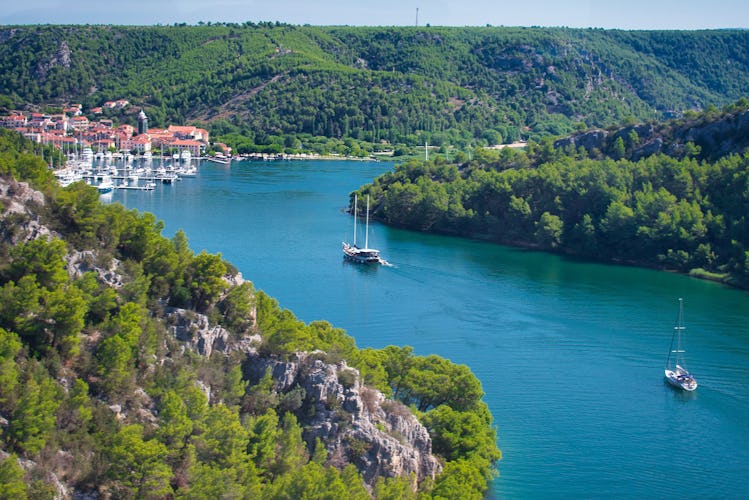
6. Maslinica
The village of Maslinica, located on the western coast of the island of Šolta, owes its existence to the pirate presence in Dalmatia in the early 18th century. The settlement sprawled around the castle built by the noble family Marchi in 1708 to protect the area from frequent pirate attacks. The Venetian family also commissioned the building of the church of St. Nicholas, located on the hill south of the bay.
Several centuries later, following the restoration of the castle and construction of a marina, this once small fishermen's village gradually grew into a tourist and nautical hub of the island, welcoming an increasing number of visitors each year.
In 2012, Maslinica received a national award for the best destination in the Adriatic under a thousand residents. It was also lauded as the best Authentic Coastal Destination in 2017.
The 300-year-old castle now houses a refurbished Martinis Marchi heritage hotel offering luxury suites, an exquisite restaurant as well as a modern marina with 50 berths for boats up to 40m in length.
Despite the modern additions, Maslinica remains irresistibly charming, inviting you with a typical Mediterranean atmosphere, unspoilt beaches and the crystal clear sea. Beautiful stone houses surrounding the quaint fishing harbour and accompanying taverns and cafes make for an ideal spot to enjoy the settings. In the afternoon, take a walk among the shaded cobbled streets or venture on a short hike and discover the untouched nature that surrounds this magical place.
7. Komiža
Situated on the magical island of Vis, Komiža is a typical Mediterranean village, sprawled around one of the most charming harbours in Croatia, nursing a long and proud maritime history.
The name Komiža was mentioned for the first time in the second part of the 12th century and has been a proud fishing community ever since. A visit to the Fisherman's museum, located in the old Venetian tower on the promenade, will introduce you to Komiža’s proud fishing history. The famous Komiža fishing boat known as gajeta falkuša is a big part of Croatian maritime heritage. Each year a replica is burned in front of the church of St. Nicholas on December 6th. It is part of the celebration of St. Nicholas, the patron saint of travellers, seamen and fisherman.
It is not surprising that life in Komiža begins and stops with its harbour, where you will find all sorts of cafes, shops and restaurants housed in magnificent stone houses. Narrow streets and passages open up to beautiful coastal views, hiding some beautiful examples of Venitian architecture.
The best time to visit Komiža is definitely at the beginning of August when the famous Fishing festival takes place. Every year, on the first Saturday in August, a huge celebration is organized on the promenade with live music, delicious grilled seafood and plenty of local wine!
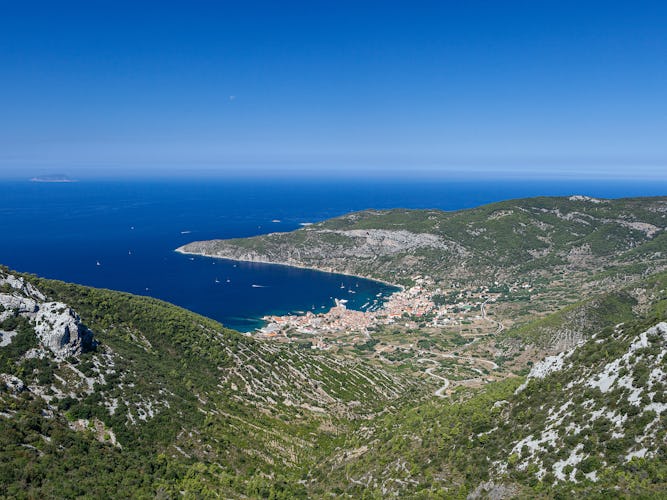
8. Orebić
Located on the western part of the Pelješac peninsula, Orebić is the largest town on the Pelješac peninsula and sits just across the sea from the Korčula.
The city bears the name of the Orebić maritime family, which established the village and built a citadel here at the end of the 15th century.
Throughout its history, Orebić was a part of the Republic of Dubrovnik, home to sailors and captains, visible today at every step. In the 17th century, Orebić became the most important centre of the Dubrovnik Republic merchant navy.
The Orebić harbour is beautifully lined with palm trees which, in combination with wonderful stone houses and old villas, create a wonderfully charming Mediterranean setting.
Today, Orebić is mostly orientated towards tourism, with strong ties to local wine production. Beautiful pebble beaches touching the crystal clear sea offer plenty of summer activities. Sailing enthusiasts will also appreciate sailing the many small islands in the beautiful archipelago of the Korčula channel.
9. Ston
Nestled at the southern end of the Pelješac peninsula, Ston is a small coastal town best known for its salt production and fortifications. Here you will find the longest stone wall in Europe: all 5.5 km of the wall is situated around Ston. The fortifications were erected in the 14th and 15th century as the Republic of Dubrovnik assumed control of Pelješac peninsula. Sections of the wall are preserved to this day, attracting visitors and adding to the spectacular visuals of the settlement.
Salt production in Ston dates back to ancient times, and records show that salt extraction began under Roman rule in the 2nd century BC, which continued to the present day.
This unique place on the Croatian coast houses several landmarks of both historical and cultural importance like the church of St. Michael, the church of the Lady of Lužin, the Great Kaštio, Offices of the Dubrovnik Republic, Count’s palace and numerous others.
Perfect for hiking and enjoying the combination of culture, history and natural beauty, Ston is a must-see when visiting southern Dalmatia.
Ston is also a place of many aromas, with the lush Pelješac vegetation offering a wide selection of ingredients for the numerous liqueurs, smelling salts, soaps and other herbal products that originated in this area.
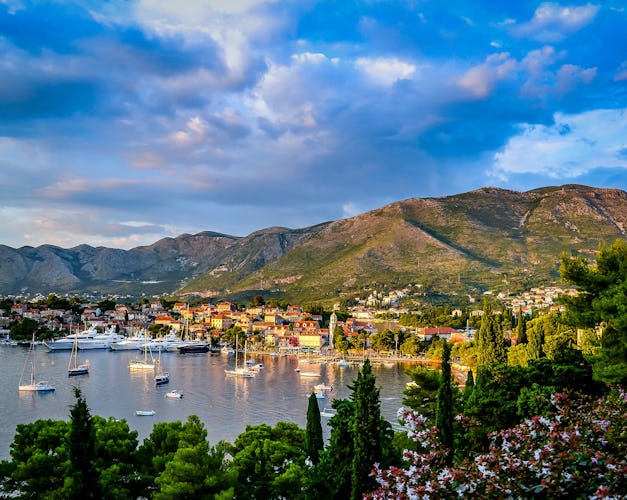
10. Cavtat
At the very south of Croatia, past the city of Dubrovnik, you will find the stunning coastal town of Cavtat. This beautiful town, full of summer houses, villas and hotels sits on a hilly, forested peninsula Rat, oddly reminiscent of the coveted French coast. Here you can enjoy a stroll down the 7km long promenade that follows a dense pine tree forest, providing ample shade throughout the day.
The most impressive and visually appealing part is the Cavtat old town, which houses many buildings and villas from the Dubrovnik Republic era and was built according to the regulation plans prescribed by the Republic.
However, the history of Cavtat is much older than that: here stood the ancient city of Epidaurus, of which only ruins and archaeological landmarks remain following barbarian pillaging in the 7th century.
The port of Cavtat is located in the west of the old town, to the east of the peninsula Sustjepan, perfectly positioned to explore the stunning architecture of this rich southern town. Perhaps the most stunning piece of architecture is located on the small hill on the Rat peninsula, where the Mausoleum of the Račić family dominates the view, created by the famous Croatian sculptor Ivan Meštrović.
Let us help you plan the perfect sailing trip
Provide your travel details, receive free offer and enjoy your holiday!
